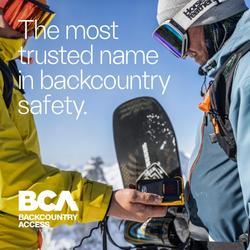This morning, the skies are partly cloudy, and temperatures are warm across the range. As of 6 AM, it was 32°F, with a total snow depth of 109 inches at the Tony Grove Snotel. At our new Card Canyon weather station (8750'), the temperature was already 30°F, with a total snow depth of 84.5 inches. Meanwhile, at the CSI Logan Peak weather station (9700'), it's 26°F, with winds blowing from the south at 30 mph and gusts up to 43 mph. Similarly, on Paris Peak (9500'), it's 26°F, with winds blowing from the southwest at 15 mph and gusts up to 30 mph.
Today will remain warm ahead of the next front, with temperatures warming into the upper 30s°F. Winds will remain more southerly and remain elevated throughout the day, averaging 15-20 mph and gusting up to 30 at mid-elevations, with gusts near 45 at upper-elevation ridgelines. We could see a trace amount of snowfall midday, but the primary system arrives overnight.
Outlook: Southwesterly flow is increasing over Utah and southwest Wyoming as a Pacific storm system moves into Nevada. This system will weaken as it crosses the state, bringing only spotty showers mainly over northern Utah due to limited moisture and instability. Temperatures will drop slightly but remain above seasonal norms. After a brief break, a stronger storm system from the Pacific Northwest will approach, with precipitation becoming widespread across northern and central Utah on Tuesday, extending to the southern half overnight. More instability on Wednesday will lower snow levels, mainly affecting mountain areas with limited valley accumulations expected. By Thursday, the precipitation threat will diminish in the northwest but persist in the southeast, with the potential for significant downslope winds in prone areas. The Logan area mountains could see 10-14" of new snow.
Lingering well-settled powder can still be found in shady upper and mid-elevation terrain, although the cold areas are diminishing. Sunny slopes will develop a firm crust this morning, becoming damp as the day progresses. Snow depth from the past week's storms is notably deeper at higher elevations but has settled well.





